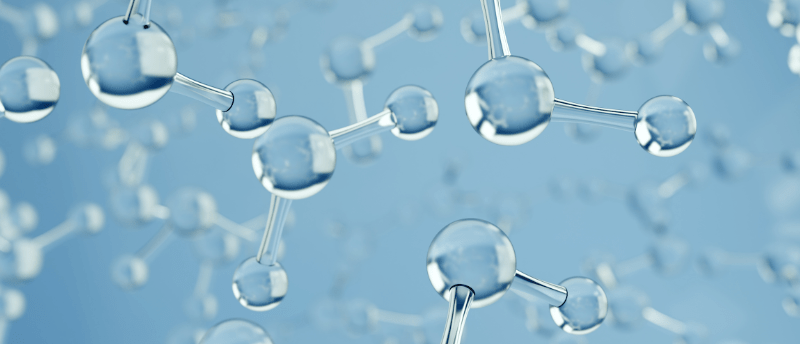Highlights from the 2023 WRIB conference and a look to the future for biomarkers from Jian Wang


Jian Wang is a Director for Bioanalysis in the Clinical Pharmacology group at Crinetics Pharmaceuticals, Inc. (CA, USA). Prior to his current position, Jian worked as a Senior Principal Scientist at Bristol Myers Squibb (NJ, USA) for 23 years. Jian graduated from Michigan State University (MI, USA) with a PhD in Analytical Chemistry focused on mass spectrometry and later became a Postdoctoral Fellow at the National Institute of Health (MD, USA). Jian offers 25+ years of experience in discovery and regulated bioanalysis in the pharmaceutical industry, managing internal and outsourced pharmacokinetic (PK), biomarker and clinical diagnostic analyses of both small and large molecules in LC/MS, ligand binding and ligand binding-LC/MS hybrid platforms, as well as using in vitro diagnostics. He is the co-coordinator of the Regulated Bioanalysis Interest Group at the American Society for Mass Spectrometry and has served as a sub-team lead of the American Association of Pharmaceutical Scientists ADC bioanalysis committee.
Could you introduce yourself and tell me a bit more about the work you do at Crinetics Pharmaceuticals?
Yes, sure. I am a Director of Bioanalysis in the Clinical Pharmacology group at Crinetics Pharmaceuticals, which is a biotech company based in San Diego, CA. We’re a small-molecule biotech company focused on the discovery and development of endocrinology drugs. Our drug development processes heavily rely on biomarkers, which can be small molecule hormones, peptides or proteins. Different technologies are required for the biomarker analyses, such as LC-MS, ligand binding assays (LBA) and hybrid LBA-LC-MS assays, as well as in vitro diagnostic platforms used in clinical diagnostic labs. I have found this to be an incredibly unique experience and it has been a great opportunity to collaborate on a daily basis with a wide range of cross-functional disciplines, which is slightly different from big pharma.
As you’ve chaired a session and presented at WRIB this year, would you mind telling us about these sessions and what was discussed?
The specialized workshop (T1) I was involved in was a great session focused on mass spectrometry. It was primarily about new LC-MS technology or methodologies for the analysis of PK and biomarkers, but there were also sessions on oligonucleotides and ADCs. The workshop covered a wide range of topics, the turnout was good and the audience was very engaged. I have received feedback from the audience saying that this was one of the best special workshops, that all the presentations were very relevant and they learned a lot. I enjoyed sharing that.
Each group has three to five speakers who present individually and then come together for a panel discussion. The speakers have the opportunity to express their experiences and try to coordinate issues brought forward by the audience. That’s a great discussion to be in. It’s traditional for the speakers to attend the Working Dinner the night before and discuss some of the “hot topics” submitted by experts in the community. Here, we discuss our point of view and provide recommendations, which will be included in the White Paper. This year, one session lasted three and a half hours! It could have gone on and on, but, being the chair, I had to keep the discussion focused.
After the session, each of the four session chairs summarizes the recommendations or comments for me and the notetaker to compile and finalize a slide deck, which will be presented at the end of the Workshop the next day. I want to take this opportunity to thank all the hard working presenters and session chairs. To give you some context, one session chair sent me her slides at 3 am and another sent the slides in at 7 am! I mean, they were really working hard overnight. So, everyone is very dedicated and actually enjoys what they do.
Have there been any particularly interesting topics of conversation, which, after the conference has finished, might progress further?
There are a couple of topics that deserve continuous discussion into the future and the first is oligonucleotides. Oligonucleotide analysis is relatively new and we’re expecting that topic will remain one of the “hot topics” at other conferences this year and at future WRIB conferences. I really enjoy hearing people share their experiences and strategies for oligonucleotides, how to measure them and whether we are going to follow the bioanalytical validation guidance and guidance for metabolite monitoring in the same way for oligonucleotides as we have for small molecules.
The other topic is biomarkers and we’ll continue to explore all the technologies and technical advances in order to analyze all the different biomarkers in different matrices. At the same time, we would like to seek further advice from regulatory agencies for biomarker validation guidance. Are we going to follow the same way as PK or do we need more clarification? Guidance like ICH M10 does not have a biomarker component, although it does include languages for the analysis of endogenous components, and the US FDA has a short paragraph on biomarkers. So, the biomarker community is still waiting for further clarification and positions from regulatory agencies on how we handle biomarker analysis. We want clarification as it’s still very empirical or not well resolved so I wish these guidelines would become clearer. I think that’s one of the wishes of our community.
My own interest in recent years is on how we bridge biomarker analysis in drug development with biomarker analysis in clinical diagnostic labs or central labs. I’d like to see harmonization of regulatory guidance because the practices for validation of biomarkers, either for drug development or for clinical diagnostics, are different. So, I think from a pharmaceutical industry and drug development perspective, we’re seeking advice from regulatory agencies on how we can most efficiently but also compliantly meet the requirements for drug development, as well as for clinical diagnostics and patient stratification.
Crinetics focuses mostly on rare diseases. Are there any particularly exciting projects or bits of research into rare diseases that you can share with us?
Yes, certainly. So, Crinetics is a pharmaceutical company that develops therapies for people with rare endocrine diseases and we work predominantly on hormones. We are heavily reliant on biomarkers and for one of our projects we have 10+ biomarkers all using different platforms. We have one drug candidate in Phase III and we are aiming for NDA filing next year. We also have a few programs in Phase II. Our discovery pipeline is robust and the company is growing rapidly. When I joined about 3 years ago, the company was made up of around 80 people, but right now we’re close to 300 and counting. In my bioanalysis and biomarker team, I currently have a group of five individuals managing bioanalytical and biomarker tasks in both preclinical and clinical studies. This one group shoulders the responsibilities of bioanalysis and translational sciences in a big-pharma setting. While providing the best available bioanalytical/biomarker support to IND-enabling toxicology to Phase III studies, the entire team is encouraged to present and publish innovative scientific and technical achievements to contribute to the bioanalytical community and to prepare a better future for all of us. The group contributed one oral presentation and three posters internally and collaborated with CRO partners at the 2023 WRIB event. I am very proud of my team!





